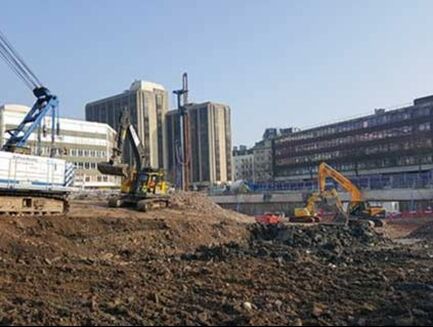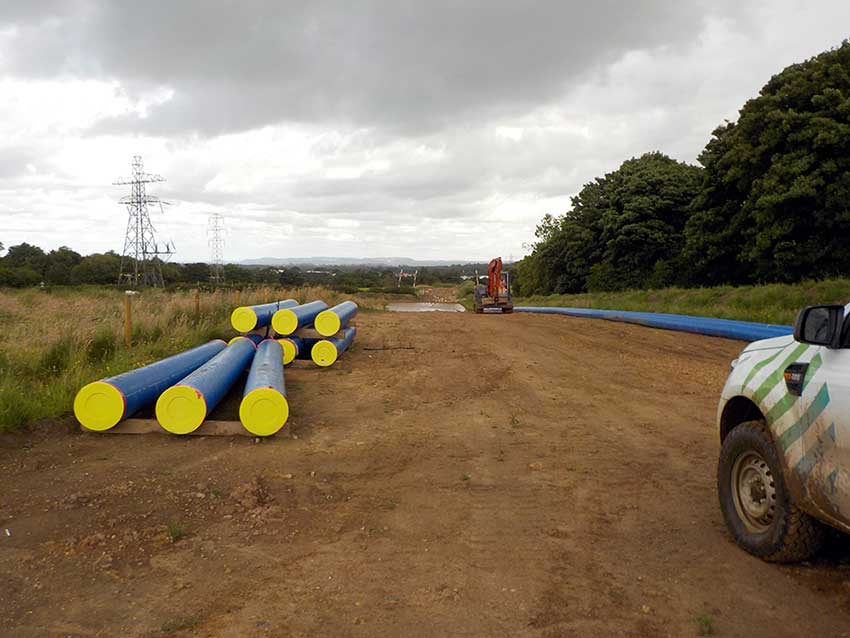Central Square, Cardiff
|
The multi-million-pound phased redevelopment of Central Square in Cardiff saw the demolition of the old bus station, Marland House and several surrounding properties to be replaced with what has been described as the gateway to the capital of Wales.
One and Two Central Square involved the construction BREEAM rated “Excellent” office buildings. Three Central Square saw the construction of the new BBC Cymru/Wales headquarters and Four Central Square involved the construction of the Interchange building that will form the new public transport hub for the city centre. |
|
As the appointed archaeological contractors Red River Archaeology delivered the fieldwork for the previously mentioned phases. Fieldwork for the first three phases consisted of a watching brief monitoring the ground disturbance of the demolition and construction work, this monitoring was continued into phase 4 with the addition of evaluation trenching. Close liaison with the main contractors facilitated efficient and cost-effective archaeological attendance and ground works. Although the redevelopment area was in a previously developed part of the city, the preservation of archaeological remains was exceedingly good. Not far below the modern surface the remains of Temperance Town were uncovered.
|
|
Intact cobbled streets could be seen as well as the walls of individual buildings of what was originally Havelock, Scott, and Gough Streets. In some houses intact fireplaces were recorded, with walls still almost 1 m high. This inner-city suburb was originally developed in the late 1850s to early 1860s to house the workers of the area.
In 1930 the Great Western Railway built its new station on the edge of the Town, however it considered the visible poverty of the area a detriment to its business and lobbied for improvements, demolition of Temperance town started in 1937. There was also evidence for earlier enterprise in the area. The remains of walls and timber structure indicated shoreline activity along the River Taff prior to its canalisation in the 19th century with pottery finds dating back to the 14th century. |








